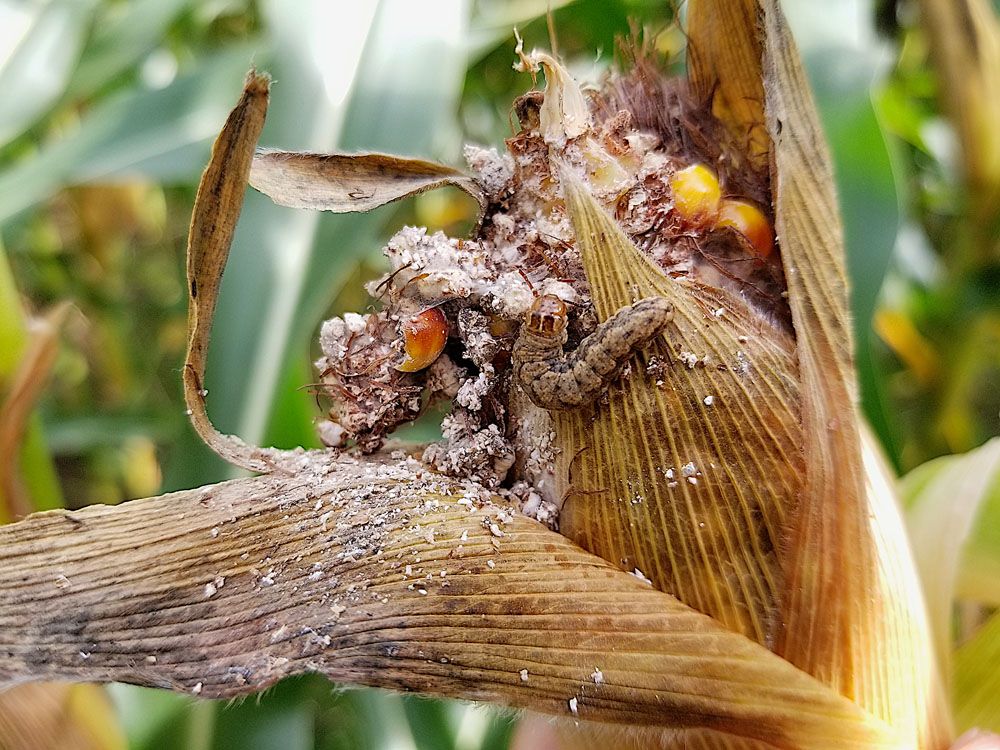
Western Bean Cutworm – Loxagrotis albicosta
Western Bean Cutworm – Lox Agrotis albicosta
Scientific Name: Lox Agrotis albicosta
Common Name: Western Bean Cutworm
Distribution: North America is home to Richia albicosta (Lepidoptera: Noctuidae), the western bean cutworm. It was originally noted as a pest of Colorado pinto beans in 1915. A pest of corn was later discovered in southern Idaho in 1954.
Host plants: The larvae eat on a broad range of plants, including beans and corn, and are considered an issue.
Identification: Western bean cutworms in their first instar are dark brown with diamond-shaped patterns on their back. As the larvae age, their color changes from light tan to pink, and the marks on their back become more apparent. Third-instar and older Western bean cutworm larvae may be identified from other cutworms and caterpillars by three distinct stripes just behind the skull. Moths are brown in color and are around 34″ long with a wing span of 112″.
The moth’s forewings are brown with a stripe across the length of each leading edge that is white or crème in color. There is a white patch halfway across each wing, just below this stripe. A white, crescent-shaped spot is located in line with the spot and farther out from the body. The mature birds have light-colored, unmarked hindwings. When newly deposited, the western bean cutworm’s eggs are white with a faint crimson ring on top. They become tan in two days, then dark purple on the fifth.
Life Cycle: The western bean cutworm reproduces once a year. Typically, moth emergence starts in early July. Following mating, females deposit their eggs on host plants that are readily available, such dried beans, popcorn, sweet corn, and field corn. While they are not the preferred oviposition hosts, females have also been seen to lay their eggs on ground cherries, nightshades, and tomatoes. Western bean cutworm females mostly deposit their eggs on the top surfaces of maize leaves. Fields with hybrids with erect leaf features and corn that is tasseling or almost tasseling are attracted to western bean cutworms for oviposition.
Egg masses range in number from 5 to 200 eggs, with an average of 50 eggs per mass. Larvae hatch 5–7 days after the eggs are placed, and the eggs themselves change color from white to tan to dark purple as they mature. Larvae spend around ten hours eating on the eggshells after hatching before moving on to other safe places to eat. Larvae travel through for around 31 days, they feed on host plants via five instars. A larva descends to the ground and burrows into the earth to build an overwintering cell when it has finished eating and developing.
Damage: Kernel feeding is the main source of WBC damage, since it lowers grain quality and yields. Feed damage to kernels makes them more prone to mold growth, which can raise the mycotoxin deoxynivalenol (DON) levels. Since they are not cannibalistic, it is possible to have many larvae per ear, yet doing so has been proven to diminish grain yields by 15% to 20%. WBC feeding may promote the colonization of the ear by mold and other fungal spores, which might further degrade grain quality and result in the production of mycotoxins.
